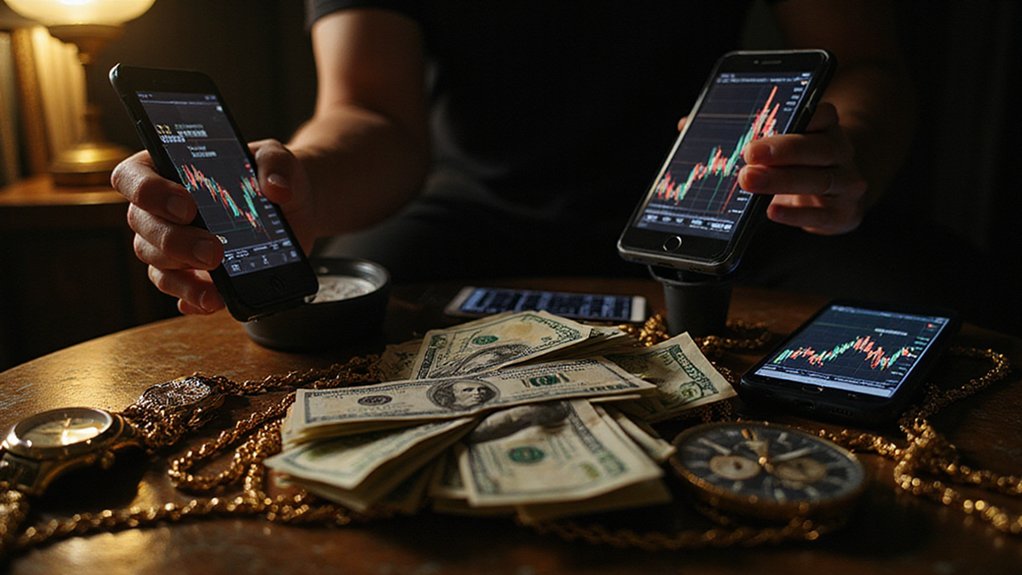Most retail traders who venture into aggressive intraday speculation discover—often with painful clarity—that the allure of quick profits masks a statistical reality bordering on the absurd: roughly 90% of day traders manage to lose 90% of their capital within 90 days, a feat that would be impressive if it weren’t so financially devastating.
The exceptional transformation from $6,800 to $1.5 million represents the kind of survivorship bias that trading forums worship while conveniently ignoring the countless accounts reduced to digital dust. These outliers typically emerge from extreme risk-taking behaviors that would make actuaries weep—particularly the widespread embrace of leverage, which 43.6% of traders employ with disturbing frequency despite margin trading producing average returns of negative 4.53%.
These spectacular wins emerge from catastrophic risk-taking that destroys countless traders for every success story celebrated online.
Professional high-frequency traders understand something their retail counterparts consistently ignore: inventory control matters more than picking winners. Sophisticated operators maintain minimal end-of-day positions and rapid contract turnover, fundamentally treating each trading session like a controlled demolition rather than a casino visit. This approach bounds maximum losses while maintaining high transaction volumes—a concept that seems to elude traders chasing seven-figure fantasies. Modern traders increasingly turn to decentralized finance venues where automated market makers eliminate the need for traditional order book matching, though these platforms introduce their own unique risks including impermanent loss and slippage effects.
The psychological dimension compounds these material risks exponentially. Over half of struggling traders continue their strategies unchanged during losing streaks, apparently operating under the assumption that persistence trumps mathematics. Fear of missing out drives decisions that rational analysis would reject, while cognitive biases transform disciplined strategies into emotional gambling sessions. Despite these challenges, 73% of traders still recognize backtesting as extremely important for validating their approaches. The persistence problem becomes even more stark considering that only 13% remain after three years of attempting to master this profession.
Even when traders deploy conventional risk management—position sizing (43.1% adoption rate) and stop-loss orders (27.5%)—the fundamental problem persists: risky trading tricks inherently involve abandoning prudent limits. The statistical reality remains unchanged regardless of protective measures: only 13% maintain profitability beyond six months, and a mere 1% survive past five years.
The harsh mathematics underlying these spectacular success stories reveals why they remain exceptional rather than replicable. Those rare traders who achieve exponential gains typically do so by accepting catastrophic risk levels that would bankrupt dozens of their peers. The trick, it seems, isn’t discovering some hidden strategy—it’s surviving long enough in an environment designed to eliminate participants with ruthless efficiency.




